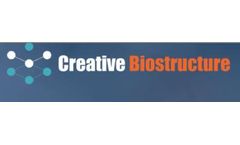Refine by
Neurodegenerative Articles & Analysis: This-Year
13 articles found
This allows for the identification of novel acetylated proteins and provides quantitative insights into how acetylation patterns change in disease states, such as cancer, metabolic disorders, and neurodegenerative conditions. This technology is indispensable for discovering new diagnostic biomarkers and therapeutic targets, pushing the boundaries of our understanding of the ...
Dysregulation of ubiquitination is a hallmark of numerous human diseases, including many cancers, neurodegenerative disorders like Parkinson's and Alzheimer's, and autoimmune conditions. ...
This innovative approach has led to breakthroughs in understanding complex brain functions, neurodegenerative disorders, and psychiatric conditions. The Role of AAVs in Optogenetics Adeno-associated viruses are particularly well-suited for optogenetics due to their ability to provide stable gene expression in non-dividing cells, such as neurons. ...
One notable study published in Nature Neuroscience (2021) demonstrated how CX3CL1-fractalkine signaling influences microglial activity in neurodegenerative diseases like Alzheimer’s. These findings suggest potential avenues for therapeutic intervention targeting neuroinflammation. ...
As a result, PROTACs have emerged as a promising strategy in various fields such as oncology, neurodegenerative disorders, and autoimmune diseases. The Role of Discovery Services Discovery services play a critical role in the early stages of PROTAC development. ...
Applications in Research HA-c can be employed in various research applications, including: Disease Modeling: By exposing HA-c to pathogenic factors or genetic modifications, researchers can create models that mimic neurodevelopmental and neurodegenerative diseases. This allows for the investigation of disease progression and the exploration of potential therapeutic interventions. ...
· Neurology – Brain organoids provide critical insights into neurodevelopmental disorders and neurodegenerative diseases, opening avenues for therapeutic treatments. · Gastroenterology – Intestinal and liver organoids support research on gastrointestinal diseases, metabolism, and gut microbiome interactions. ...
APIs for Parkinson's Disease: Continuing the Fight Against Neurodegeneration Parkinson's disease, a progressive neurodegenerative disorder, manifests through symptoms such as bradykinesia, muscle rigidity, and tremors. ...
This modeling can be invaluable for studying the pathophysiology of diseases such as cancer, neurodegenerative disorders, and metabolic syndromes. Drug Discovery and Screening: Knockout cell lines can be employed to assess the efficacy of new drugs by observing how they influence cells lacking specific genes. ...
The cell cycle is an essential biological process that enables cells to grow, duplicate their DNA, and divide into daughter cells. This cycle is carefully regulated by proteins to ensure accuracy in cell replication. Disruptions in these controls can lead to uncontrolled cell division, a hallmark of cancer and other diseases. Cell cycle progression is orchestrated by key proteins, including ...
Metabolic Health and Disease Research Alterations in NAD/NADH levels are associated with a wide range of diseases, including cancer, diabetes, neurodegenerative disorders (e.g., Alzheimer’s and Parkinson’s), and mitochondrial diseases. ...
Neuroscience: Explore the role of inflammation and growth factors in neurodegenerative diseases like Alzheimer’s. Clinical Diagnostics: Develop biomarkers for disease progression, response monitoring, or precision medicine strategies. ...
Moreover, lipidomic shifts can also reveal insights into metabolic conditions such as obesity, diabetes, and neurodegenerative diseases. For instance, certain lipid species found in exosomes may indicate disrupted signaling pathways or abnormal cellular function, providing opportunities for therapeutic intervention. ...






